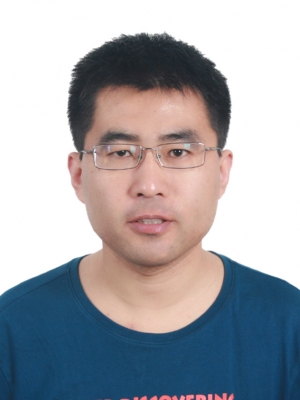
丁晓伟
中山大学心理学系 教授
办公地址:中山大学东校区心理学系508A
E-mail:dingxw3@mail.sysu.edu.cn
研究方向:认知科学
个人主页:https://scholar.google.com/citations?hl=zh-CN&user=eqEDgJ8AAAAJ
个人信息
中山大学心理学系教授,博士生导师
教育背景
2002年-2006年:山东师范大学心理学院 本科
2009年-2015年:浙江大学心理与行为科学系 博士(硕博连读)
职业经历
2015年-2018年:浙江大学心理与行为科学系 博士后
2018年-2024年:中山大学心理学系 副教授
2024年-至今:中山大学心理学系 教授
研究领域
致力于解决认知科学的核心问题——“心智如何工作”。
采用心理物理实验、生态化行为记录(眼动、VR、现场实验)、人工智能技术(深度学习、自然语言处理)、神经科学手段(EEG、iEEG、fMRI)、数学建模、临床与发展性样本、大数据、大模型等多样化手段来回答下列问题:
1. 记忆、学习、决策的基本机制,及上述过程在社会情境中如何表达;
2. 人类高阶智能的本质(如合作,公平,审美等)。
科研经费支持
1. 国家自然科学基金面上项目
2. 教育部人文社会科学研究一般项目
3. 广东省自然科学基金面上项目
4. 广州市基础研究项目
5. 高校基本科研业务费中山大学青年教师重点培育项目
6. 高校基本科研业务费中山大学交叉项目
7. 中山大学百人计划引进人才启动基金
8. 中国博士后面上项目一等资助
代表性论文
完整发表请见谷歌学术主页
https://scholar.google.com/citations?hl=zh-CN&user=eqEDgJ8AAAAJ
*通讯作者
1. Chen, W., Li, W., & Ding, X.* (2025). Ensemble-based working memory updating and its computational rules. Psychological Review. Advance online publication. https://doi.org/10.1037/rev0000569
2. Su, Z., Qiu, Y., & Ding, X.* (2025). Unifying scene-object congruency and incongruency benefits in object perception. Journal of Experimental Psychology: General, 154(6), 1740–1759. https://doi.org/10.1037/xge0001761
3. Ye, S., Xie, B., Lin, X., & Ding, X.* (2025). Dominant as underdogs: inefficient search for dominant-looking faces. Personality and Social Psychology Bulletin, Advance online publication. https://doi.org/10.1177/01461672251331337
4. Wang, S., Lin, Z., & Ding, X.* (2025). Exploring how high-level relations function in working memory: Unique mechanism of social grouping compared to nonsocial grouping. Journal of Experimental Psychology: General. Advance online publication. https://doi.org/10.1037/xge0001794
5. Wang, S., Min, X., & Ding, X.* (2025). The dominoes of features: Dynamic sequential refinement of working memory representations. Cognition, 260, 106133. https://doi.org/10.1016/j.cognition.2025.106133
6. Chen, W., Li, W., Huang, Y., & Ding, X.* (2025). Flexible utilization of spatial representation formats in working Memory: Evidence from both small-scale and large-scale environments. Journal of Memory and Language, 141, 104587. https://doi.org/10.1016/j.jml.2024.104587
7. Ji, H., Wang, K., Kong, G., Zhang, X., He, W., & Ding, X.* (2024). The basic units of working memory manipulation are boolean maps, not objects. Psychological Science, 35(8), 887-899. https://doi.org/10.1177/09567976241257443
8. Wang, S., Lin, Y., & Ding, X.* (2024). Unmasking social attention: The key distinction between social and non-social attention emerges in disengagement, not engagement. Cognition, 249, 105834. https://doi.org/10.1016/j.cognition.2024.105834
9. Ye, S., Ye, T., Duan, Z., & Ding, X.* (2024). Working memory for gaze benefits from the face context. Psychonomic Bulletin & Review, 31(4), 1516-1526. https://doi.org/10.3758/s13423-023-02430-y
10. Zhang, Y., Ye, S., Chen, W., & Ding, X.* (2023). When “looking at nothing” imparts something: Retrospective gaze cues flexibly direct prioritization in visual working memory. Journal of Experimental Psychology: Human Perception and Performance, 49(11), 1407–1419. https://doi.org/10.1037/xhp0001160
11. Xu, L., Yang, Z., Ji, H., Chen, W., Lin, Z., Huang, Y.*, & Ding, X.* (2023). Direct evidence for proactive suppression of salient-but-irrelevant emotional information inputs. Emotion, 23(7), 2039–2058. https://doi.org/10.1037/emo0001213
12. Duan, Z., Huang, Y., Shi, B., & Ding, X.* (2023). Two discoveries, one principle: Using a two-stage Bayesian model to explain a dissociated working memory distraction effect. Journal of Experimental Psychology: General, 152(6), 1647–1670. https://doi.org/10.1037/xge0001358
13. Sun, Y., Wang, X., Huang, Y., Ji, H., & Ding, X.* (2022). Biological motion gains preferential access to awareness during continuous flash suppression: Local biological motion matters. Journal of Experimental Psychology: General, 151(2), 309–320. https://doi.org/10.1037/xge0001078
14. Duan, Z., Ye, T., Poggi, A., & Ding, X.* (2020). Gaze towards my choice: Noneconomic social interaction changes interpersonal trust only with positive feedback. Psychonomic Bulletin & Review, 27, 1362-1373. https://doi.org/10.3758/s13423-020-01785-w
15. Ji, H., Yin, J., Huang, Y.*, & Ding, X.* (2020). Selective attention operates on the group level for interactive biological motion. Journal of Experimental Psychology: Human Perception and Performance, 46(12), 1434–442. https://doi.org/10.1037/xhp0000866
16. Nie, Q. Y., Ding, X.*, Chen, J.*, & Conci, M. (2018). Social attention directs working memory maintenance. Cognition, 171, 85-94. https://doi.org/10.1016/j.cognition.2017.10.025
17. Sun, Y., Stein, T., Liu, W., Ding, X.*, & Nie, Q. Y.* (2017). Biphasic attentional orienting triggered by invisible social signals. Cognition, 168, 129-139. https://doi.org/10.1016/j.cognition.2017.06.020
18. Ding, X., Yin, J., Shui, R., Zhou, J.*, & Shen, M.* (2017). Backward-walking biological motion orients attention to moving away instead of moving toward. Psychonomic Bulletin & Review, 24, 447-452. https://doi.org/10.3758/s13423-016-1083-9
19. Ding, X., Gao, Z.*, & Shen, M.* (2017). Two equals one: two human actions during social interaction are grouped as one unit in working memory. Psychological Science, 28(9), 1311-1320. https://doi.org/10.1177/0956797617707318
20. Ding, X., Zhao, Y., Wu, F., Lu, X., Gao, Z.*, & Shen, M.* (2015). Binding biological motion and visual features in working memory. Journal of Experimental Psychology: Human Perception and Performance, 41(3), 850–865. https://doi.org/10.1037/xhp0000061
教授课程
本科生:记忆、学术论文写作、心理学导论、心理学导论实验
研究生:注意专题
招聘信息
本实验室诚聘博士后研究员。请有意向合作的博士联系:丁晓伟 dingxw3@mail.sysu.edu.cn

